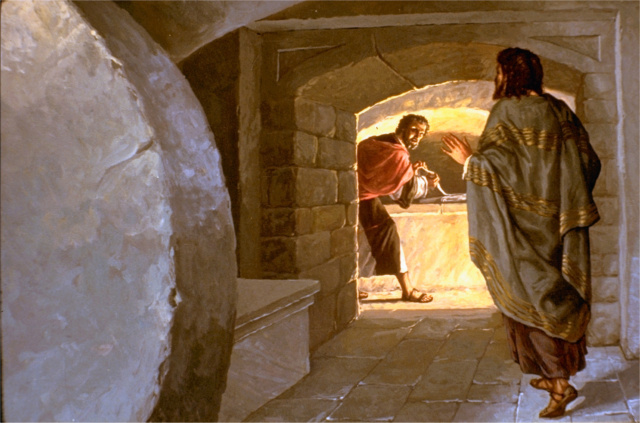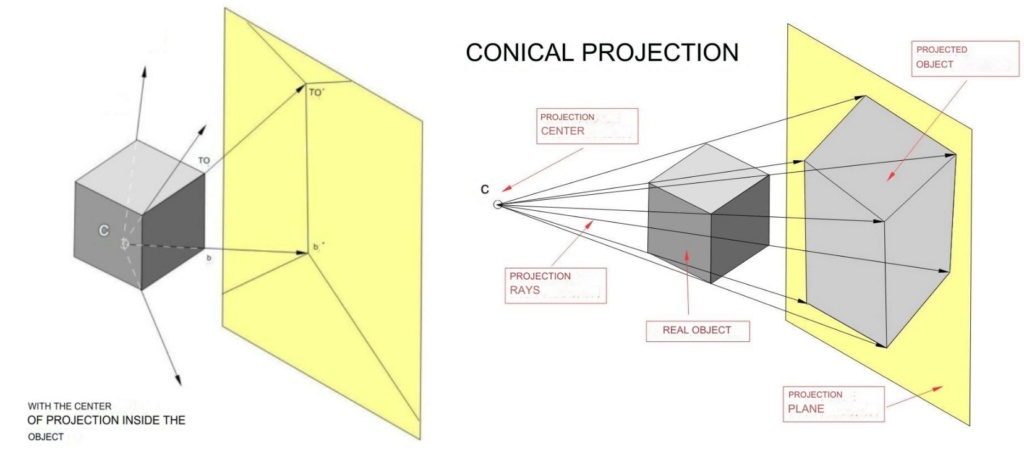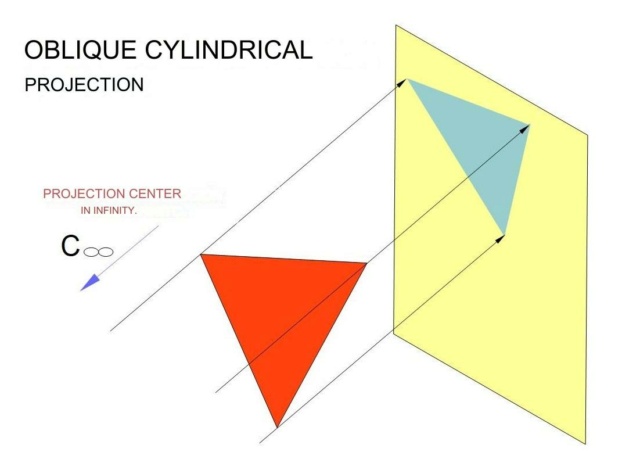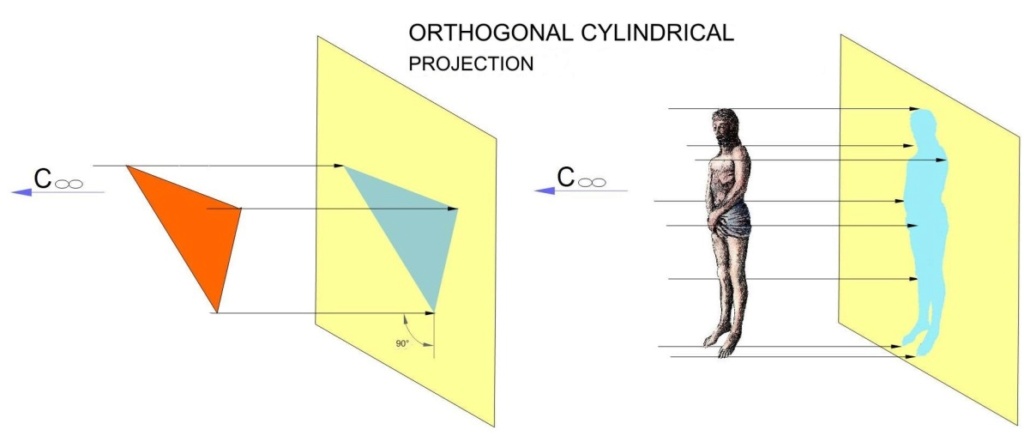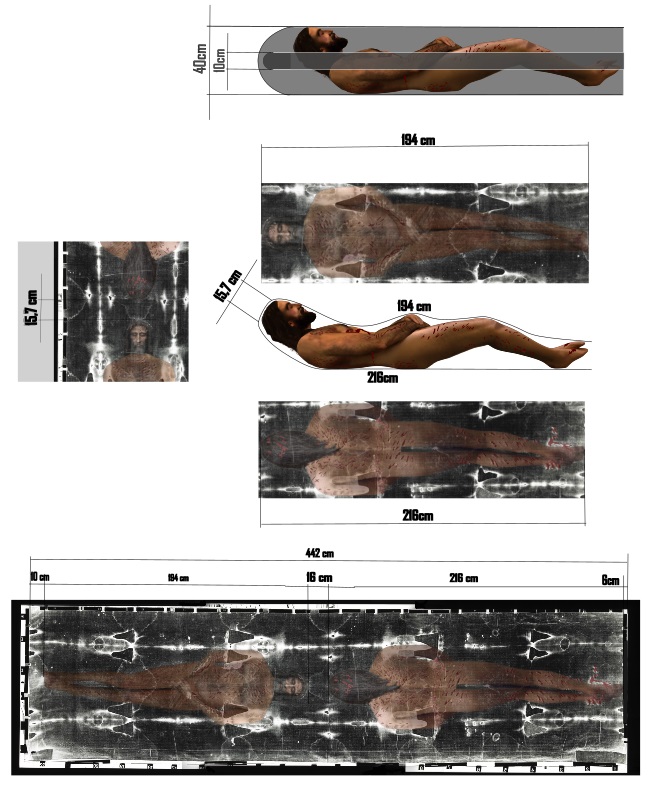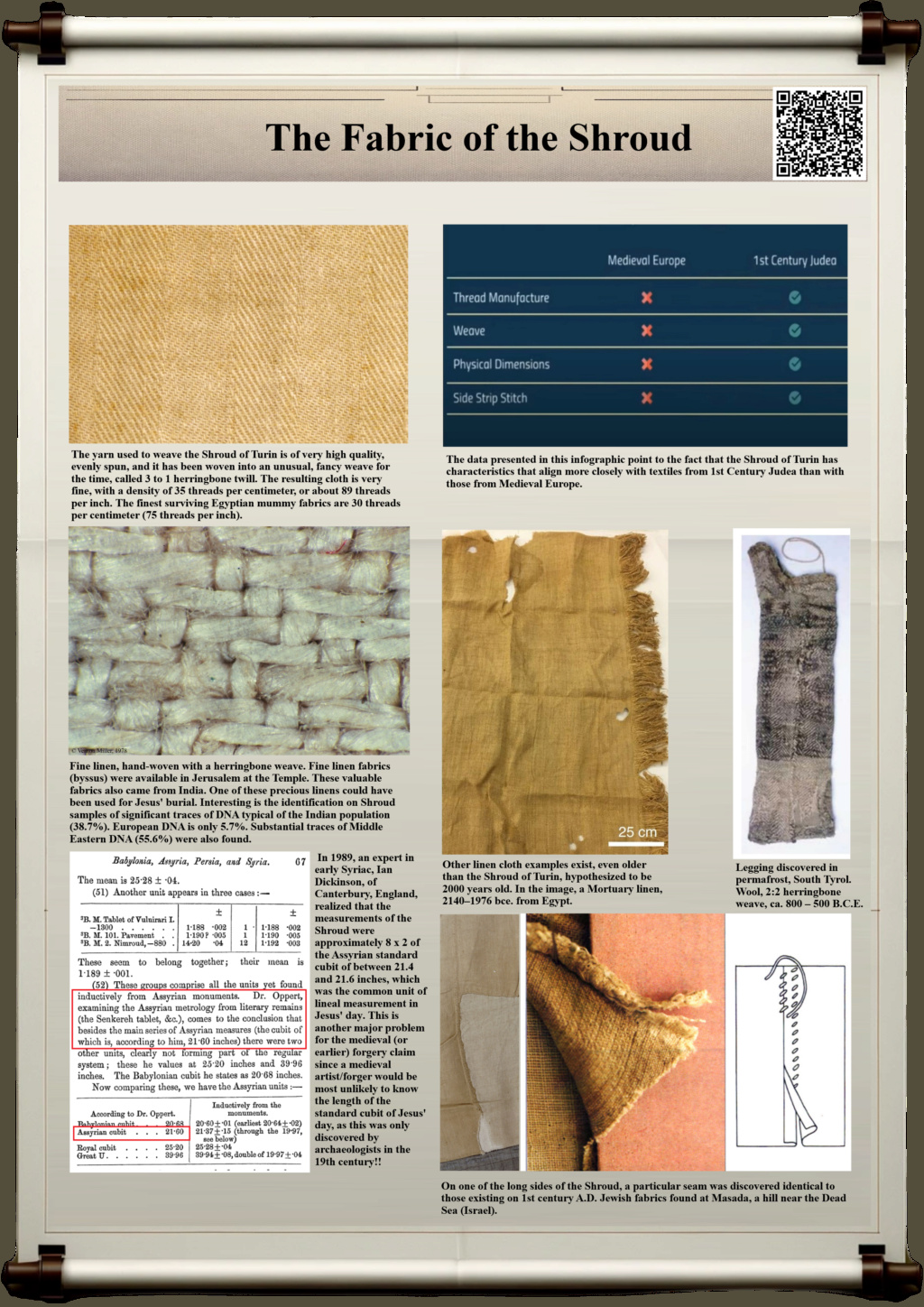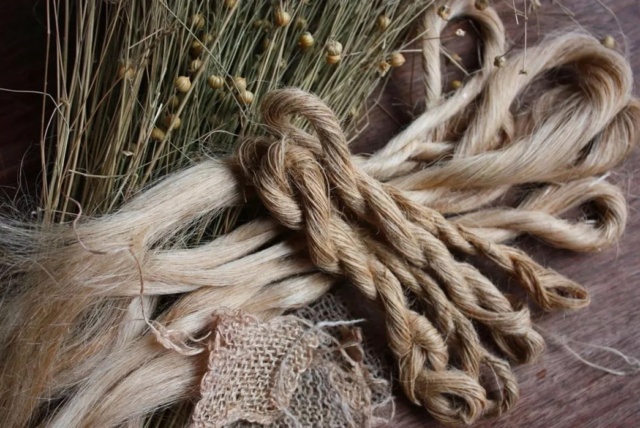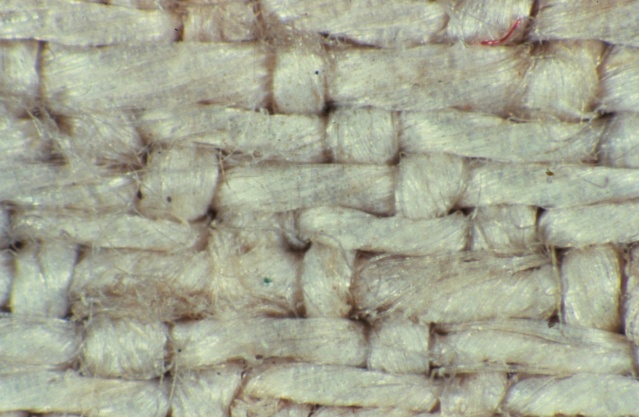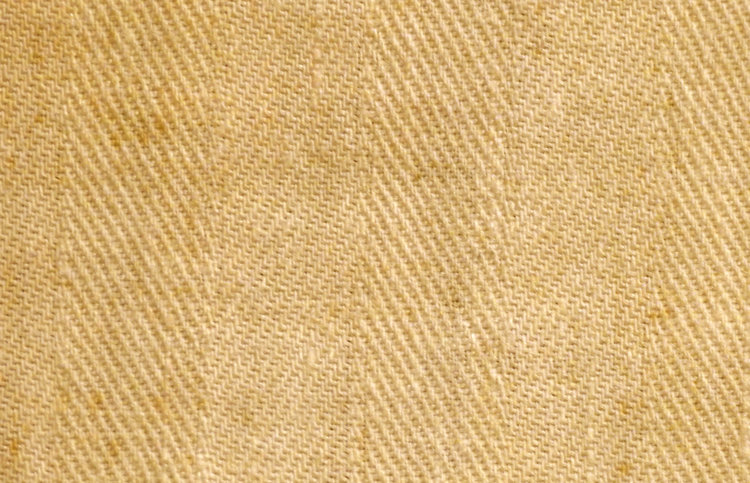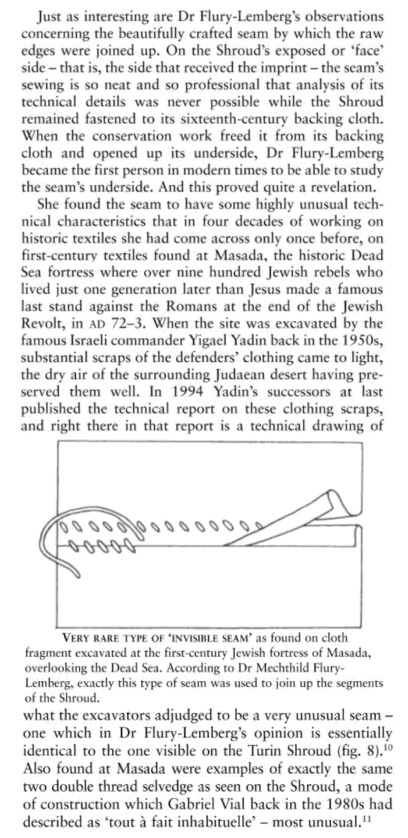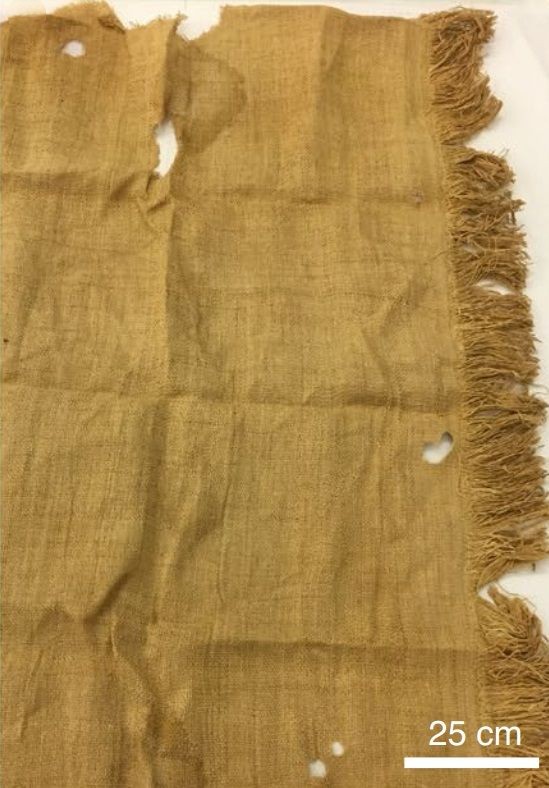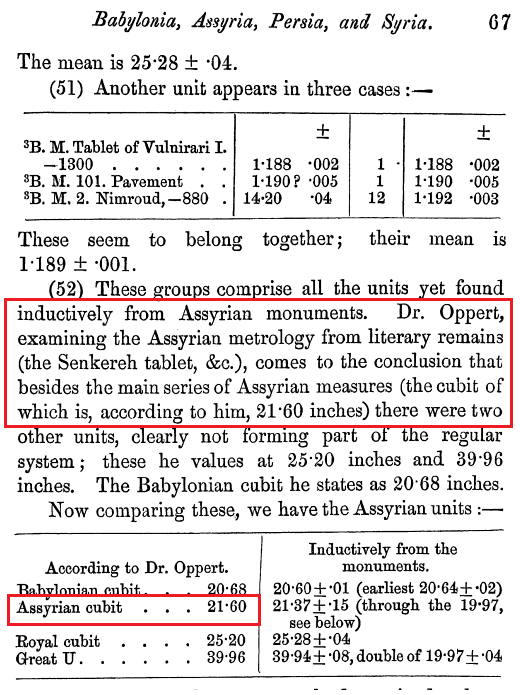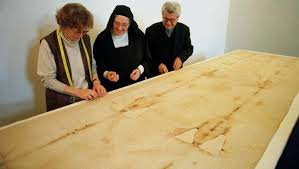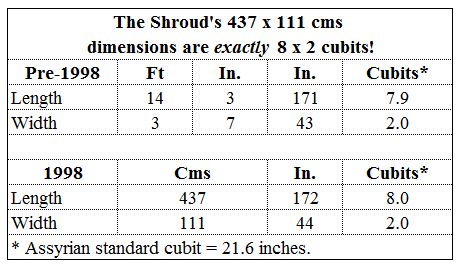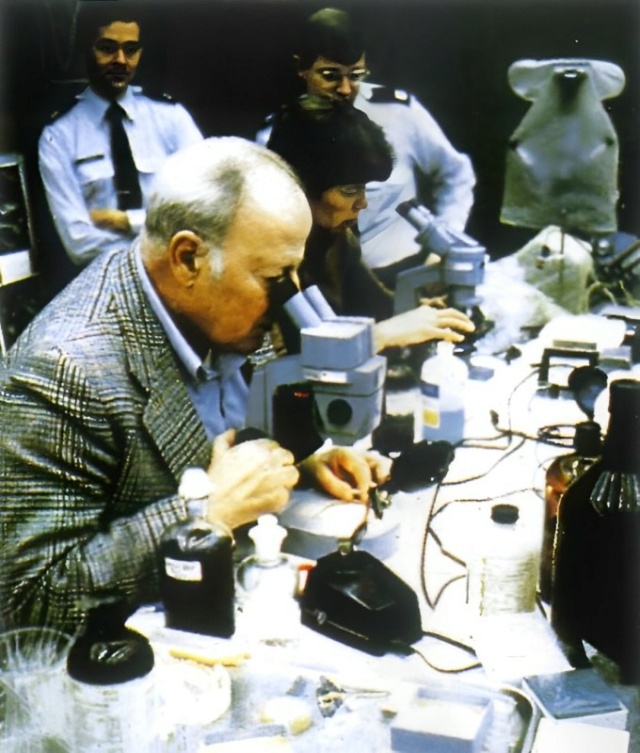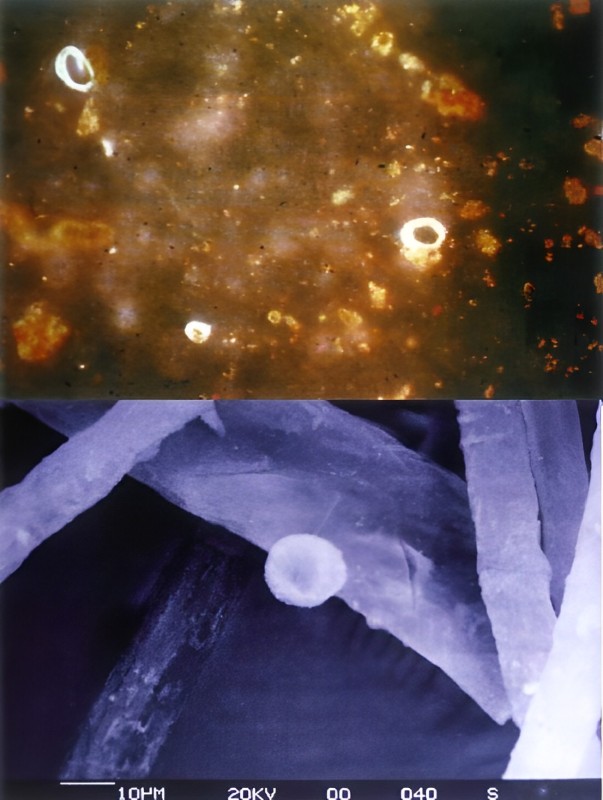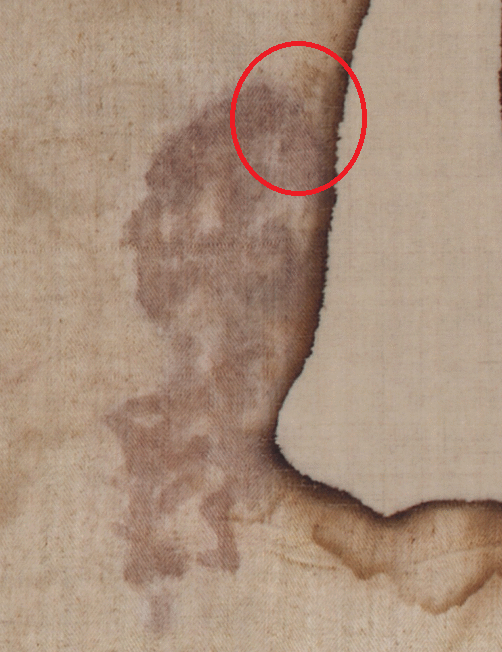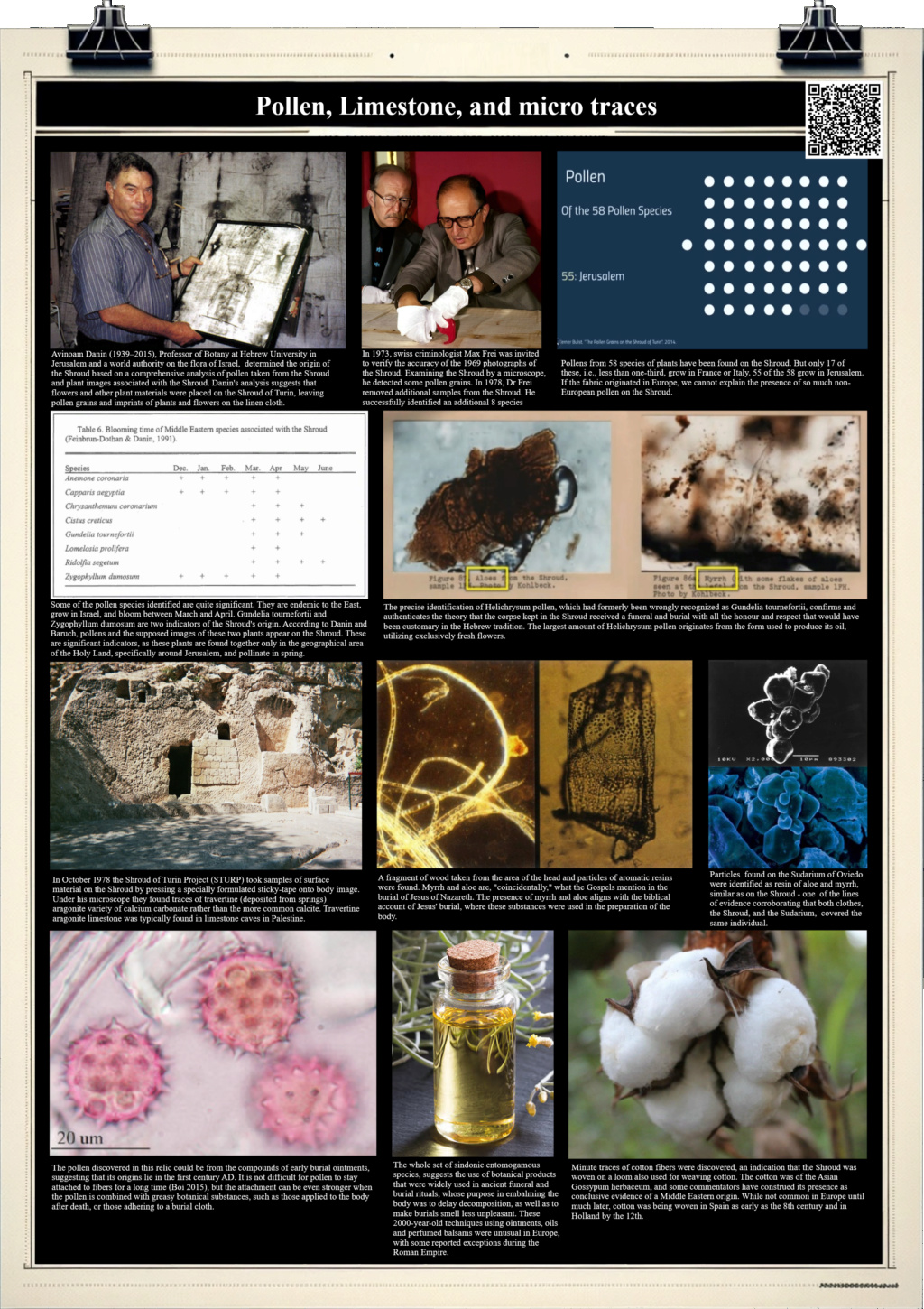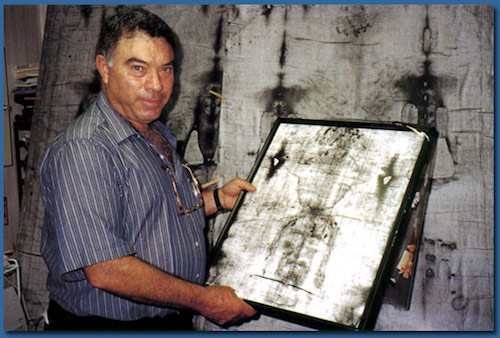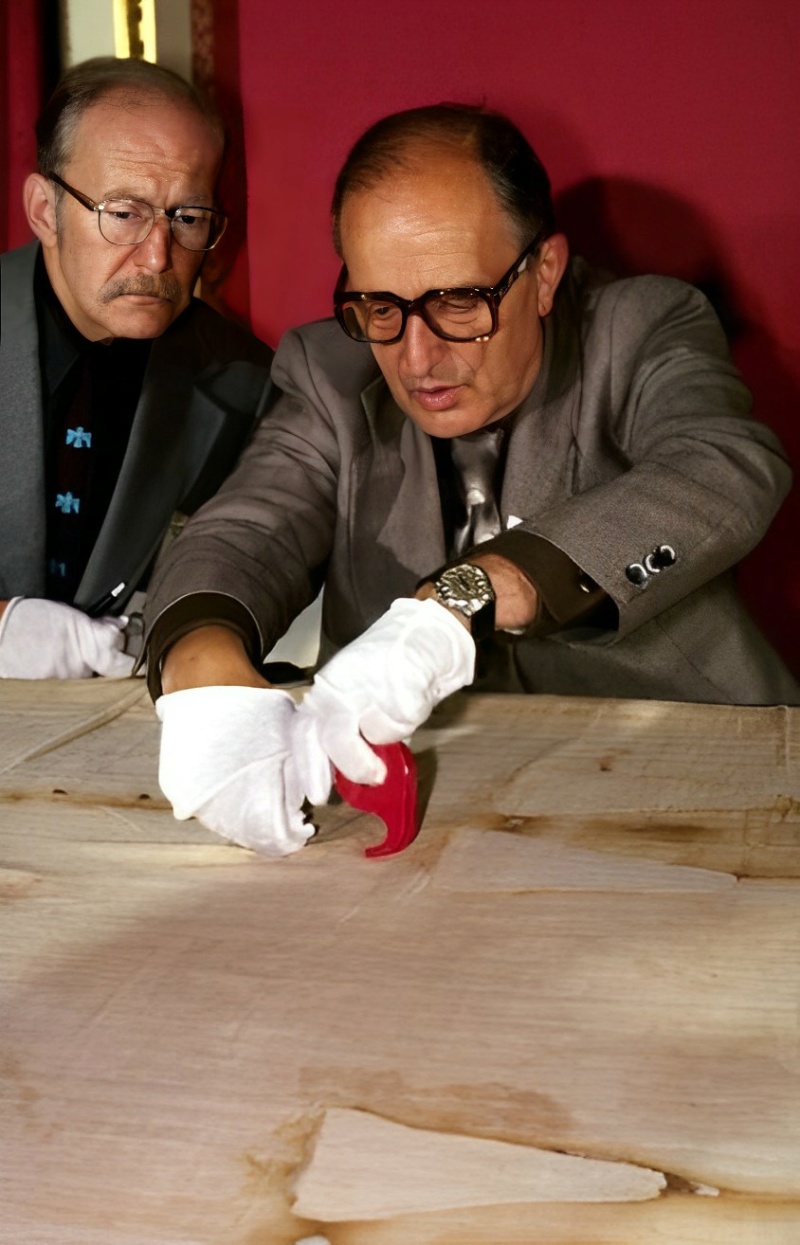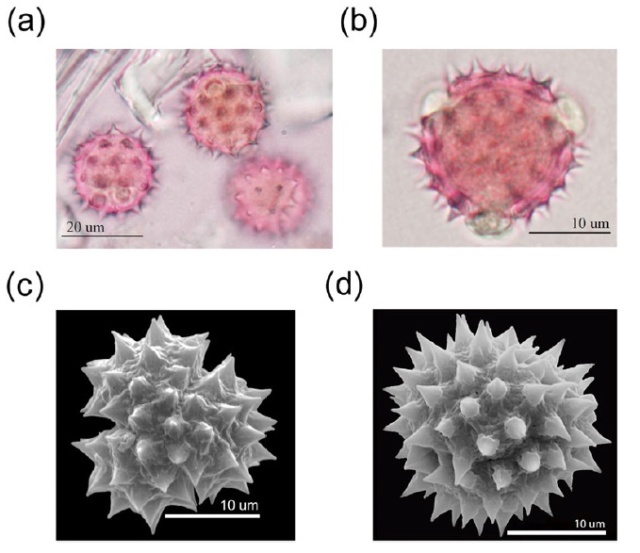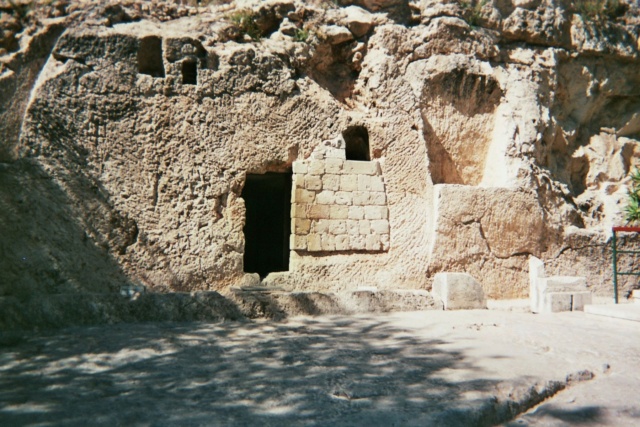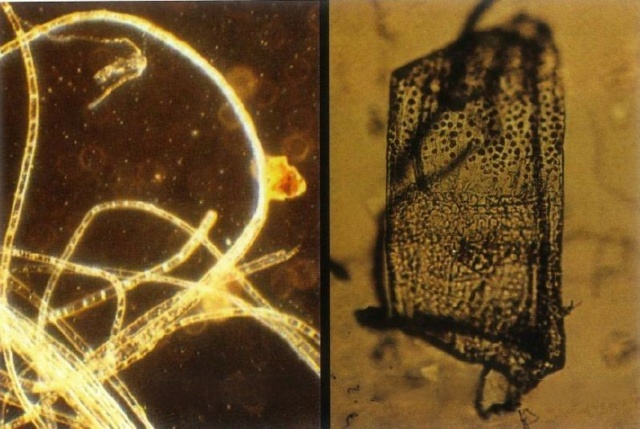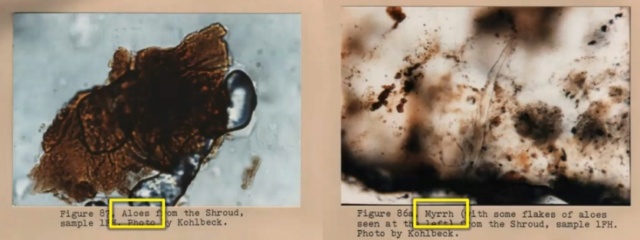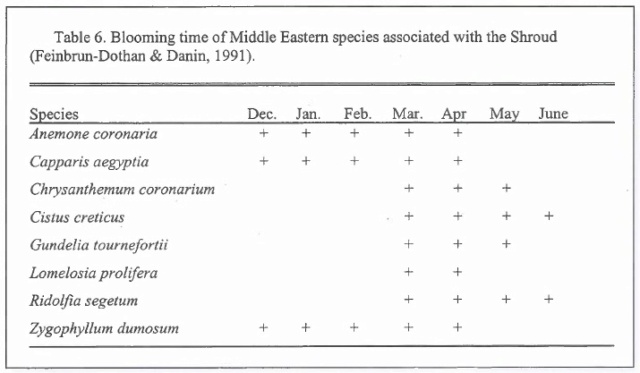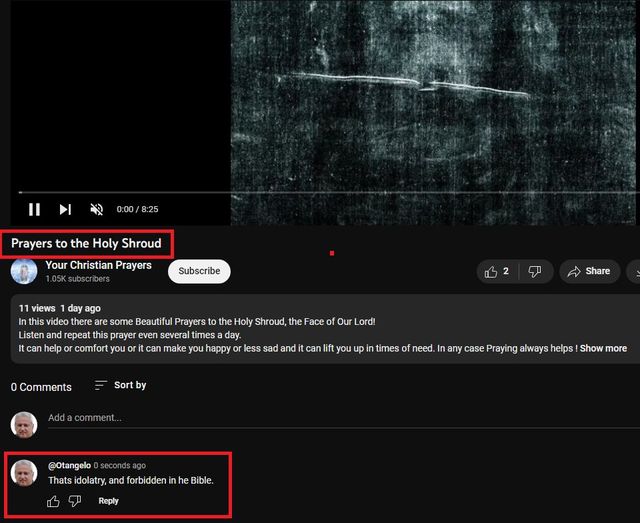"The Sudarium Which Was on His Head" (Jn 20:2)
The Gospel of John states that the LINEN CLOTHS were lying there fallen, and the HANDKERCHIEF that had been on His head was not lying with the linen cloths but in its own place, folded up. It should be remembered that a handkerchief - "sudarium" was used to cover the head of the deceased from the time of death until the final burial.
OUN HO PETROS KAI HO ALLOS MATHETES KAI ERONTO EIS TO MNEMEION ETRE- JON DE HOI DYO HOMOU KAI HO ALLOS MATHETES PRO- EDRAMEN TAJION TOU PETROU KAI ELTHEN PROTOS EIS TO MNEMEION KAI PA- RAKUPSAS BLEPEI KEIME- NA TA OTHONIA OU MENTOI EISELTHEN ERJATAI OUN KAI SIMON PETROS AKO- LOUTHON AUTO KAI EIS- ELTHEN EIS TO MNEMEION KAI THEOREI TA OTHONIA KEIMENA KAI TO SOUDA- RION HO EN EPI TES KEFA- LES AUTOU META TON OTHONION KEIMENON AL- LA LORIS BENTETYLIGME- NON EIS HENA TOPON TOU- TE OUN EISELTHEN KAI HO ALLOS MATHETES HO ELTHON PROTOS EIS TO MNEMEI- ON KAI EIDEN KAI EPISTEU SEN 1
Translation: Gospel of John in Greek, specifically from chapter 20, verses 3-8:
"But Peter and the other disciple set out for the tomb. The two were running together, but the other disciple outran Peter and reached the tomb first. He bent down to look in and saw the linen wrappings lying there, but he did not go in. Then Simon Peter came, following him, and went into the tomb. He saw the linen wrappings lying there, and the cloth that had been on Jesus’ head, not lying with the linen wrappings but rolled up in a place by itself. Then the other disciple, who reached the tomb first, also went in, and he saw and believed."

In the Cathedral of Oviedo in northern Spain is a linen cloth called the Sudarium Christi, or the Face Cloth of Christ. It is often referred to as the Cloth of Oviedo. The Sudarium Christi is a poor-quality linen cloth, like a handkerchief, measuring 33 by 21 inches. Unlike the Shroud of Turin, it does not have an image. However, it does have bloodstains and serum stains from pulmonary edema fluid which match the blood and serum patterns and blood type (AB) of the Shroud of Turin.
The Sudarium Christi has a well-documented history. One source traces the cloth back as far as 570 AD. Pelayo, Bishop of Oviedo in the 1100s, noted in his Chronicles that the Oviedo Cloth left Jerusalem in 614 AD in response to an attack led by Persian King Chosroes II, and made its way across North Africa to Spain. It was transported to Oviedo in a silver ark (large box) along with many other sacred relics. The Sudarium was never in contact with the Shroud since its arrival in Spain around 711 AD. The Oviedo Cloth was placed around the head at the time of death on the Cross and remained there until the body was to be covered by the Shroud in the Garden Tomb. Then it was removed and placed to one side (John 20:7). Oviedo scholar Mark Guscin notes that the practice of covering the face is referenced in the Talmud (Moed Katan 27a). He adds that Rabbi Alfred Kolatch of New York talks of the Kevod Ha-Met or "respect for the dead" as the reason for covering the head. Rabbi Michael Tuktzinsky of Jerusalem in his Sefer Gesher Cha'yim (Volume 1, Chapter 3, 1911) offers as a reason that it is a hardship for onlookers to gaze on the face of a dead person. According to Guscin, studies by members of the Spanish Centre for Sindonology (Dr. Jose Villalain, Jaime Izquierdo, and Guillermo Heras of the University of Valencia) using infrared and ultraviolet photography and electron microscopy have demonstrated that this Cloth and the Shroud of Turin touched the same face, although at different points in the burial process. They note that the length of the nose on both cloths is 8 centimeters (3 Inches). Tradition and historical information support the idea that the face touched by both cloths was that of the historical Jesus of Nazareth. Those interested in the work of Oviedo scholar Mark Guscin can read about it in his book The Oviedo Cloth, 1998, The Luttenworth Press, Cambridge, CT. ISBN 07188-2985-9. Original text by John C. Iannone 1999-2001. Adapted by J.M. Fischer from 2004 to 2016.
Shroud photos courtesy of Barrie M. Schwortz. 1978
The Sudarium of Oviedo is a small piece of cloth measuring approximately 84 x 53 cm (33 x 21 inches) and is made of a fine, transparent linen fabric. The Sudarium bears numerous bloodstains, which are believed to have come from Jesus' face. The stains are brownish-red in color and are distributed irregularly across the cloth, forming a pattern consistent with the wounds inflicted during the crucifixion, including a large stain over the nose and mouth area. The bloodstains are a prominent feature of the relic and have been the subject of much analysis. Here are some details about the bloodstains: The bloodstains on the Sudarium are distributed in a pattern that corresponds to the anatomy of a face. There is a large stain over the nose and mouth area, with smaller stains around the eyes and cheeks, as well as near the hairline. This pattern is consistent with the placement of wounds inflicted during crucifixion, such as those caused by a crown of thorns or from blood flowing from the nose and mouth. The bloodstains on the Sudarium are brownish-red in color, indicating that the blood had oxidized and aged over time. The stains have a mottled appearance, with some areas darker and others lighter, which is consistent with the characteristics of bloodstains that have dried and spread on a porous linen fabric. The bloodstains on the Sudarium vary in size and shape. Some stains are small and round, while others are larger and irregular in shape, suggesting that they were created by contact with wounds that had different sizes and shapes. The bloodstains on the Sudarium are not superficial but appear to have penetrated the fabric. This suggests that the blood came into direct contact with the cloth and was absorbed by the fibers, rather than being applied on the surface. One notable feature of the bloodstains on the Sudarium is the absence of smear marks. Smear marks, which would typically be present if blood had been wiped or smeared on the cloth, are not found on the Sudarium, suggesting that the blood was applied in a different manner, such as by contact with a passive, motionless object like a face.
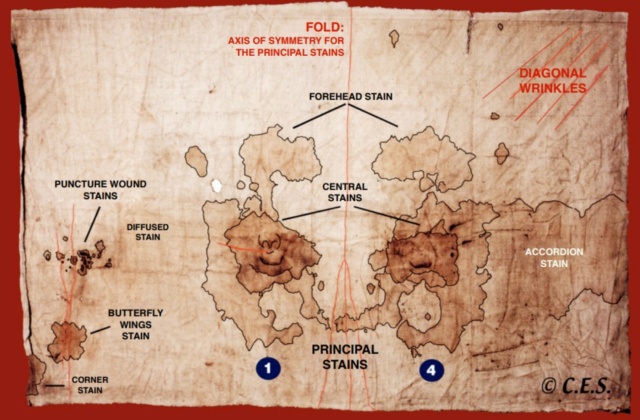
Whole Blood Stains: These stains are dark red or brown and are the result of fresh blood coming into contact with the cloth. Whole blood stains typically exhibit a consistent color throughout the stain, and they may appear as small or large patches on the Sudarium.
Serum Stains: Serum is the clear, yellowish fluid that separates from blood when it clots. Serum stains on the Sudarium appear as lighter areas that may have a yellow or yellow-brown color. These stains are typically smaller in size and may be found within or around whole blood stains.
Transfer Stains: Transfer stains occur when blood from a wound is transferred to another surface, such as when a cloth is pressed against the wound. On the Sudarium, transfer stains may appear as distinct imprints of a wound, showing the shape and size of the injury. These stains can provide valuable information about the type of wound that caused the blood stains.
Clotted Blood Stains: Clotted blood stains on the Sudarium appear as dark, irregularly shaped areas that result from blood coagulating and forming clots. These stains can provide insights into the coagulation properties of the blood, which can be useful for forensic analysis.
Smudged Blood Stains: Smudged blood stains on the Sudarium may occur when blood is smeared or wiped across the cloth. These stains may appear as irregular or blurred patches of blood, and they can provide clues about how the cloth was handled or manipulated after coming into contact with blood.
The Sudarium of Oviedo has various blood stains. Three of these stains are particularly noteworthy: the butterfly stain, faded stain, and crown of thorns.
Symmetric Stains: The symmetric stains on the Sudarium of Oviedo are blood stains that exhibit a high degree of symmetry, with a pattern that is almost perfectly mirrored on both sides of the cloth. These stains are typically located near the center of the Sudarium and are characterized by their consistent and symmetrical appearance. The symmetric stains may be oval, circular, or elongated in shape, and they may vary in size.
The origin and significance of the symmetric stains on the Sudarium of Oviedo are subjects of ongoing research and investigation. Some researchers believe that these stains may be the result of blood flow from a wound on the head, given their central location on the cloth and their symmetrical appearance. Others propose that the symmetric stains may have been formed through a process of capillary action, where blood was drawn into the cloth by the fibers, resulting in a symmetrical pattern.
The symmetric stains on the Sudarium of Oviedo are of particular interest to those studying the cloth, as they provide valuable clues about the bloodstain patterns and the possible events that may have taken place during the burial of Jesus Christ. Further research and analysis of these stains may help shed more light on their formation and significance about the Sudarium's history and religious beliefs.
Butterfly Stain: The butterfly stain on the Sudarium of Oviedo is a distinctive pattern that resembles the shape of a butterfly. It consists of two large, symmetrical, and elongated blood stains that are connected at one end, with the opposite ends fanning out. The butterfly stain is located near one edge of the cloth and is characterized by its unique shape and symmetry. The origin and significance of the butterfly stain are subjects of debate among researchers and scholars, and various theories have been proposed to explain its formation.
Faded Stain: The faded stain on the Sudarium of Oviedo is a blood stain that appears to be lighter in color compared to the surrounding stains on the cloth. It may have a more brownish or yellowish hue, indicating that the blood may have undergone some changes or degradation over time. The faded stain is typically smaller in size and may be found in various locations on the Sudarium. The cause of the faded stain, whether it is a result of natural degradation or other factors, is a topic of investigation among experts.
Crown of Thorns: The crown of thorns stain on the Sudarium of Oviedo is a cluster of blood stains that resemble the pattern of a crown, with multiple small stains arranged in a circular or semi-circular shape. This stain is associated with the crown of thorns that is said to have been placed on Jesus' head during the crucifixion, according to Christian tradition. The crown of thorns stain is often located near the top of the Sudarium and is characterized by its unique pattern resembling a crown, which is of significant religious significance to Christians.
Holes: The Sudarium has several holes, which are believed to be from puncture wounds caused by thorns or other sharp objects. The holes are located near the edges of the cloth and are irregular in shape, further supporting the theory that the Sudarium was used to cover a face that had been beaten and pierced.
Folds: The Sudarium shows evidence of having been folded in a particular manner, with a distinctive pattern of creases and folds. The folds form a "zig-zag" pattern that is consistent with the Jewish burial customs of the 1st century AD, where a body would be wrapped in a shroud and the face covered with a separate cloth.
Water stains: The Sudarium also bears faint water stains, which are believed to have been caused by the cloth being used to wipe Jesus' face after he was taken down from the cross and before it was folded and placed in the tomb.
Age and wear: The Sudarium shows signs of age and wear, including discoloration, fraying edges, and patches where the original fabric has been reinforced with newer fabric. These signs of wear are consistent with its long history as a revered relic.
Connection of the Sudarium to the Shroud of Turin
Blood type and DNA analysis: Studies conducted on both the Sudarium of Oviedo and the Shroud of Turin have found that they both contain bloodstains with the same blood type, known as AB. In addition, DNA analysis of the bloodstains on both relics has shown similar characteristics, with shared genetic markers. However, it's important to note that these findings do not conclusively prove that the Sudarium and the Shroud were in contact with the same individual, as blood type and DNA alone cannot definitively identify a specific person.
Consistency of bloodstains: The bloodstains on both the Sudarium and the Shroud are consistent in their location, distribution, and patterns. For example, both relics have bloodstains over the nose and mouth area, which is consistent with wounds caused by a crown of thorns, and both have bloodstains around the eyes and cheeks, which could correspond to blood flow from facial injuries. This similarity in the bloodstain patterns has been considered as evidence that the Sudarium and the Shroud were used similarly, possibly to cover the face of the same individual.
Historical and geographical proximity: The Sudarium of Oviedo and the Shroud of Turin have both been associated with the region of Palestine and are believed to have had the same religious communities at different points in history. According to historical records, the Sudarium was brought to Spain from Jerusalem in the 7th century, while the Shroud is believed to have been brought to France from Constantinople (present-day Istanbul) in the 14th century. Some proponents of the connection between the two relics argue that their proximity in time and geography supports the idea that they were associated with the same individual, namely Jesus Christ.
Complementary nature: Proponents of the connection between the Sudarium and the Shroud argue that the two relics are complementary to each other. The Sudarium, being a smaller cloth specifically used to cover the face, could have been used in addition to the larger Shroud, which is believed to have covered the entire body of Jesus. Some researchers suggest that the Sudarium was used as an initial covering for the face immediately after the crucifixion, and then the body was wrapped in the Shroud, which explains the similarities in bloodstain patterns between the two relics.
In his 2007 book THE CASE FOR THE REAL JESUS, Lee Strobel, former legal editor of the Chicago Tribune, interviewed some of the most accomplished historians specializing in ancient texts. The case was made without a single mention of the Shroud of Turin or the Sudarium.
"In recent years, six major challenges to the traditional view of Jesus have emerged... They are among the most powerful and prevalent objections to creedal Christianity that are currently circulating in popular culture." (Page 14)
After grilling the experts, he summarized his findings on pages 266 and 267:
"Are scholars discovering a radically different Jesus in ancient documents just as credible as the four gospels? No, the alternative texts that are touted in liberal circles are too late to be historically credible - for instance, the Gospel of Thomas was written after AD 175 and probably closer to 200.According to eminent New Testament scholar I. Howard Marshall of the University of Aberdeen in Scotland, the Thomas gospel has 'no significant new light to shed on the historical Jesus.'The Secret Gospel of Mark, with its homoerotic undercurrents, turned out to be an embarrassing hoax that fooled many liberal scholars too eager to buy into bizarre theories about Jesus, while no serious historians give credence to the so-called Jesus Papers. The Gnostic depiction of Jesus as a revealer of hidden knowledge - including the teaching that we all possess the divine light that he embodied - lacks any connection to the historical Jesus.
Is the Bible's portrait of Jesus unreliable because of mistakes or deliberate changes by scribes through the centuries? No, there are no new disclosures that have cast any doubt on the essential reliability of the New Testament. Only about one percent of the manuscript variants affect the meaning of the text to any degree, and not a single cardinal doctrine is at stake. The unrivaled wealth of New Testament manuscripts greatly enhances the credibility of the Bible's portrayal of Jesus.
Have new explanations refuted Jesus' resurrection? No, the truth is that a persuasive case for Jesus rising from the dead can be made by using five facts that are well-evidenced and which the vast majority of today's scholars on the subject - including skeptical ones - accept as true: Jesus' death by crucifixion; his disciples' belief that he rose and appeared to them; the conversion of the church persecutor Paul; the conversion of the skeptic James, who was Jesus' half-brother; and Jesus' empty tomb. All the attempts by skeptics and Muslims to put Jesus back into his tomb utterly fail when subjected to serious analysis, while the overblown and ill-supported claims of the Jesus Tomb documentary and book have been decimated by knowledgeable scholars.
Were Christian beliefs about Jesus stolen from pagan religions? No, they were not. Allegations that the virgin birth, the resurrection, communion, and baptism came from earlier mythology simply evaporated when the shoddy scholarship of 'copycat' theorists was exposed. There are simply no examples of dying and rising gods that preceded Christianity and that have meaningful parallels to Jesus' resurrection. In short, this is a theory that careful scholars discredited decades ago.
Was Jesus an imposter who failed to fulfill the messianic prophecies? On the contrary, a compelling case can be made that Jesus - and Jesus alone - matches the 'fingerprint' of the Messiah. Only Jesus managed to fulfill the prophecies that needed to come to fruition before the fall of the Jewish temple in AD 70. Consequently, if Jesus isn't the predicted Messiah, then there will never be one. What's more, Jesus' fulfillment of these prophecies against all odds makes it rational to conclude that he will fulfill the final ones when the time is right.
Should people be free to pick and choose what they want to believe about Jesus? We have the freedom to believe anything we want. But just because the U.S. Constitution provides equal protection for all religions doesn't mean that all beliefs are equally true. Whatever we believe about Jesus cannot change the reality of who he established himself to be: the unique Son of God. So why cobble together our make-believe Jesus to try to fulfill our prejudices when we can meet and experience the actual Jesus of history and faith?"
Alfonso Sánchez Hermosilla 2015 Commonalities between the Shroud of Turin and the Sudarium of Oviedo
The new discoveries done after the inspection of the Sudarium of Oviedo, both macroscopic and microscopic, coincide with the accumulated knowledge that already existed. Said research was initiated by Mons. Ricci, and followed by EDICES. Additionally, the information which contains matches what the researchers who have had access to the Shroud of Turin have published, and with the information provided by the Gospels about the facts related to the Passion, Death, and post-mortem handling of the corpse of Jesus of Nazareth. These discoveries are compatible with intense physical maltreatment, with multiple traumas that produce bruised wounds, bleeding wounds, sharp wounds, and bruised wounds, which probably include flagellation in the Roman manner using a Flagrum Taxilatum. Although in the Sudarium of Oviedo, there are no objective final signs of the presence of a penetrating injury into the thorax, there are plenty of indirect signs that point to this possibility. When writing this report, we do not have another alternative hypothesis to the previously expressed, with real possibilities of being true. This damage must have been produced after the death of the Man of the Shroud, and not when he was still alive. All the information provided by the study and research of these relics matches to what, from the Forensic Medicine point of view, was to be expected to happen in linens of these characteristics if they had covered the head of a corpse that had received all the injuries that suffered Jesus of Nazareth according to the Gospels. We are aware of the lack of up-to-date and agreed protocols by the scientific community for the investigation of archaeological pieces similar to the Sudarium of Oviedo and the Shroud of Turin. This is a field where researchers are still pioneers, which makes very difficult progress in the investigation, due to the necessity to be cautious and efficient. The discoveries that have been made open new areas of research that were unexpected until now. A priori they seem to be promising, which includes new stains that were unknown until now. For this reason, it seems reasonable to believe that it would be convenient to carry out new direct research in the future on both Relics and to relate the discoveries that have been verified in the Sudarium of Oviedo to possible matches to the Shroud of Turin. 1

The cloth, which was attached to the back of the head, was secured with pins, possibly made from thorns, based on the punctures in the cloth. The pins were conical in shape, similar to a needle. There are a number of perforations, related to the formation of the stains and the original use of the linen. Some of these were produced when the Sudarium was fastened to the head of the deceased, using sharp instruments that scientists believe were pinned to the beard and hair. They have a truncated conical nature, and appear in pairs, indicating the possibility that thorns were used. The wrinkles and perforations in the image indicate where the cloth was secured on the beard of the man.

The lower main stains observed in the Sudarium were produced by a mixture of blood and pulmonary edema at the rate of 1 to 6 that flowed slowly from the nose and mouth while the corpse was in a vertical position with the head inclined 70 degrees forward about the vertical axis. Pulmonary edema is characteristic of crucifixion victims. This blood has been determined to be post-mortem blood. The Sudarium, therefore, would have to have been placed on the head of a crucified man about 4 pm, who had died about an hour before

After approximately one hour, at about 5:00 p.m., once the Roman centurion pierced the corpse’s thorax, the body was taken down probably with the arms still fixed to the horizontal beam. For unknown reasons, the caretakers who moved the body decided to turn the corpse face down. In this posture, the nasal flow ran into the back of the nose and soaked the upper part of the main stains that were covering the bridge of the nose and the forehead. The corpse remained like this for almost another hour.

Let's look at the coincidences that evidence that the sudarium wrapped the same man of the Shroud of Turin. Both cloths have been used for a bearded man with a mustache and longhair arranged behind in a ponytail. The Shroud shows a crucified man and the corpse of the Sudarium died in an upright position. Moreover, in both cases, the executed man was tortured with a crown of thorns. Finally, in both instances, the blood corresponds to the scarce type AB. It is easy to see the back of the hair in the Shroud image. If we look carefully and use the reinforced negative image, we can see long hair falling from the bottom of the nape of the neck to the space between the shoulder blades. The ponytail can also be observed on both clothes. The "ponytail" could be a result of the attachment and sewing of the Sudarium around the central back strand of hair. There is a distinction on the cloth between lifeblood and post-mortem blood. One can distinguish that from taking samples from the cloth and the blood that came out through the nose and mouth mixed with the pleural edema fluid is postmortem blood.
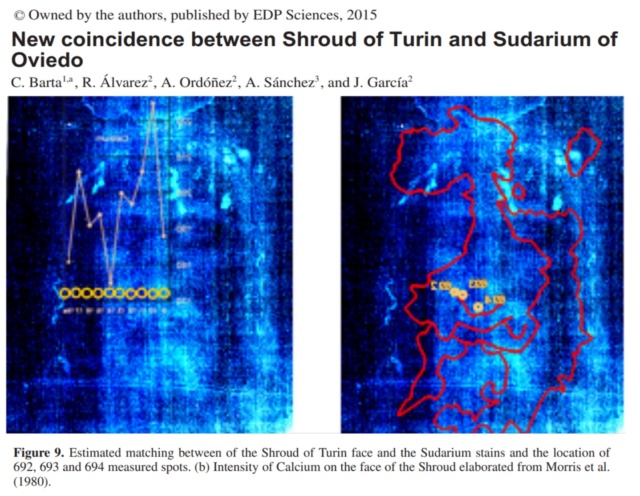
Furthermore, It is atypical to find soil dirt in this zone of the anatomy, but it is just the same zone where a particular presence of dust was found in the Shroud of Turin. The very low concentration of strontium traces in the Sudarium matches also well with the type of limestone characteristic of the rock of Calvary in Jerusalem
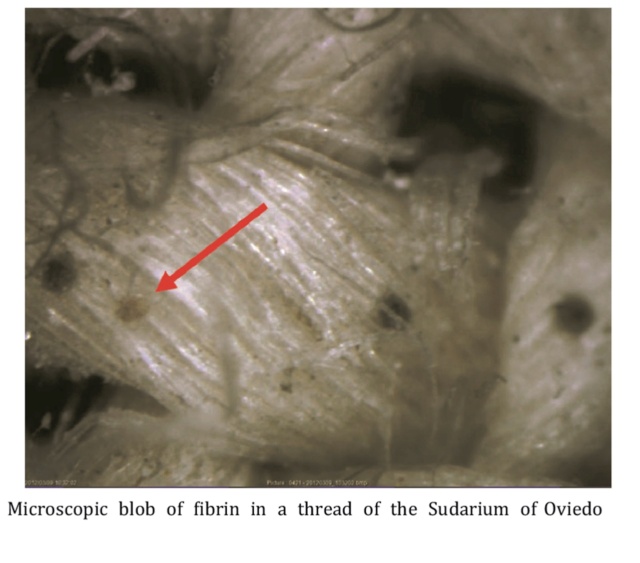
In 2012, scientists detected the presence of structures that are compatible with dried blobs of fibrin. The most likely hypothesis is that such blobs were formed within a body cavity, pleural and/or pericardial. To reach such a condition, the individual must undergo severe trauma as the scourging and a few hours must elapse to allow the fibrin formation before the fluid is released. The fibrin accumulated in the pleural cavity needs a path to reach the Sudarium. This path could be the wound from the spear that connected the cavity with the respiratory tracts. In the Sudarium of Oviedo, the presence of these fibrin blobs free from blood elements could be another indirect proof of the scourging, because the formation of fibrin requires a previous injury. This is the most plausible hypothesis for the formation of the fibrin elements. To reach the Sudarium, the fibrin could flow out through the nose and the mouth, together with blood and the liquid of the edema from the lungs.
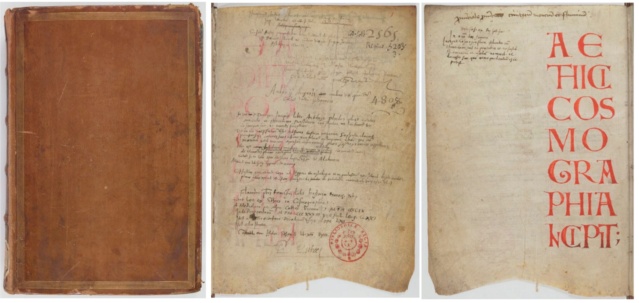
The oldest surviving manuscript of Antoninus' account of his pilgrimage visiting Jerusalem in AD 570, is a Latin manuscript entitled "Itinerarium Antonini Placentini Peregrinatio ad loca sancta“, translated, The Journey of Antoninus of Piacenza to the Holy Places. This manuscript is preserved in the Bibliothèque Nationale de France in Paris, France, and is dated to the 8th century. It is a handwritten copy of Antoninus' travel diary and provides valuable insights into the Christian pilgrimage to the Holy Land during the late antique period.

Ancient documents relate that the Sudarium was safeguarded in Jerusalem until the Persian invasion of 614 A.D. The Christians fled to Spain with a chest filled with relics, stopping briefly in Alexandria, Egypt. The chest remained in Seville during the time of Saint Isidore and was transferred to Toledo after he died in 636 A.D. When the Muslims invaded Spain in 711 A.D., they quickly conquered Toledo, so the Christians absconded to the north with their relics. The Holy Chest was hidden on a mountaintop near Oviedo for 50 years. The relics were then transferred to a monastery in Oviedo until King Alphonsus II built the Holy Chamber in the year 812 A.D., now part of the Cathedral.
All the studies carried out so far point in one direction, with nothing to suggest the contrary. The sudarium was used to cover the head of the dead body of Jesus of Nazareth from when he was taken down from the cross until he was buried. The Sudarium provides strong, independent evidence for the authenticity of the Shroud of Turin. If the Shroud is a fake, then the Sudarium must also be so. Such a wide range of evidence as presented here strengthens the tradition that both cloths have wrapped the same body, that of Jesus of Nazareth. This makes the job of any potential forger close to impossible. The two cloths authenticate and validate each other and together they provide a strong case for being the original burial cloths of Jesus. Both coincide and fit perfectly with the Gospel accounts.
1. https://www.researchgate.net/publication/276400495_Commonalities_between_the_Shroud_of_Turin_and_the_Sudarium_of_Oviedo
Last edited by Otangelo on Mon Jan 29, 2024 2:42 pm; edited 2 times in total




